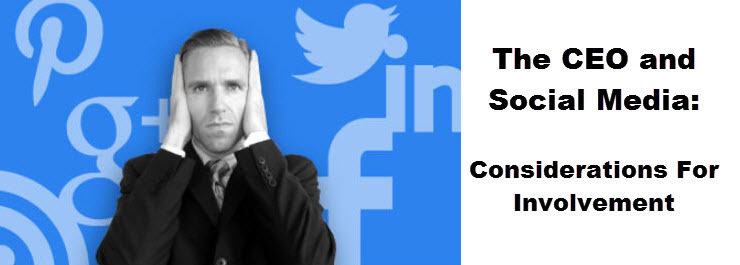This post should probably have been called “Social Media Selling Secrets: 26 Strategies On How to Sell for ROI in Social Media”…
In any online business setting, there is simply no need for social media unless it converts (or you are running an awareness / branding campaign and not interested in making money!)
That means “a sale”, and/or that the visitor reaches a specific goal or event that you have outlined in your social media marketing strategy.
This level of planning will lead your prospects into a helpful, client / customer-focused funnel that informs, educates, inspires and CONVERTS.
It is no secret that social media services such as Twitter (x.com), Facebook (Meta), LinkedIn, Pinterest and YouTube are powerful promotional tools when used properly. YouTube Ads lead generation frameworks are great for scaling fast.
However, many businesses are promoting themselves on social media in entirely the wrong way.
You’ve probably seen more than a few businesses and influencers using social media like this:
…they contribute nothing to the community and never bother to broadcast updates unless they contain self-serving links, selfies or offers (and as affiliates).
Furthermore, they put as little effort as possible into building a viable social media presence and receive almost nothing in return – except for likes and comments – and that is their “measure of success”!
To promote your business successfully on social media, you need to realize that social media can help bring targeted leads to your sales funnel, but social media itself isn’t the funnel.
Social media also isn’t a self-piloting machine; while you can effectively promote your business on social media while spending almost no money, time and effort are required.
Use these tips to maximize your return on the time you invest.
And, don’t forget paid media.
1. Offer something to new followers.
People will rarely follow your business on social media simply because you ask.
To encourage people to follow you, offer something in return such as exclusive content or a discount on their next purchase.
2. Humanize your social media presence.
Social media is an opportunity to give your business a face and add a personal touch to the often impersonal world of business.
Let social media users know that following you creates an avenue through which they can obtain personalized help and support.
3. Funnel traffic from social media to your website.
Ultimately, the goal for your social media presence is to encourage your followers to visit your website.
Some of the ways in which you can do this include linking to your most recent blog posts and offering a free product such as an e-book.
4. Funnel traffic from your website to the desired action.
Once your social media followers reach your website, you should have an action that you want them to perform and a funnel designed to guide them toward that action. In the beginning, you can use the same sales funnel as the one you use for people who come to your website from search engines.
As you gain experience, consider setting up separate sales funnels that specifically target your social media followers.
Your followers are people who already know your company and have warmed up to your offers; be mindful of that fact when designing your social media sales funnel.
5. Make sure the funnel converts.
If your sales funnel doesn’t generate sales, your promotional efforts on social media will be unsuccessful.
Set up a system by which you can track the ratio of visitors to conversions and tweak as necessary. GA4 (Google Analytics 4 is a great starting place)
6. Post occasional “share bait.”
You can gain new social media followers by posting content that your existing followers enjoy and share.
Potential “share bait” may include a viral video or a massive list of resources (listicals) related to the field in which you do business.
7. Connect your website to social media.
People who find your website through search engines but don’t purchase immediately have potential value as social media followers.
Make sure they have a way to follow you quickly by clicking a button on your website.
8. Every social media update shouldn’t be an offer.
If you only post sales offers on social media services, you’ll lose followers as quickly as you gain them.
The majority of your posts should be pure information; sales offers should be the minority. One rule we often look to is the 80-20 rule: 80% info/education/entertainment, 20% offers.
9. Watch related hashtags.
If you use Twitter, follow the hashtags that are relevant to your business.
This puts your finger on the pulse of the people who are talking about your industry and the topics related to it.
10. Even non-buyers are valuable.
A social media follower doesn’t have to be a customer to be valuable to your promotional campaign.
Followers share content that they enjoy; every update that gets shared or re-tweeted can bring new followers into the fold.
11. Social media is more than a platform for broadcasting new blog posts.
People follow your business on social media because they want the personal touch.
If your social media profile has no purpose except to advertise your latest blog updates, you’re missing the point.
12. Serve others, too.
Every social media update doesn’t have to be self-serving. Post interesting content and offers occasionally even if you have nothing to gain.
This builds trust and makes your own offers that much more compelling.
13. Ask your followers for help.
If you engage your followers and make them feel valued, they’ll be there for you when you need evangelists.
If you need help getting the word out about an event or promotion, don’t be afraid to ask for it.
14. Be there for your followers after the sale.
If your followers use social media to contact you for support after they buy, do your best to provide help courteously and promptly.
15. Comment on trending topics.
If you have something of value to add to a topic generating a great deal of social media interest, do so.
Trending topics receive a great deal of attention on social media and a valuable comment could gain you new followers.
16. Add a photo to your profile.
Your social media profile should have a photo that projects the image you want your business to present.
17. Utilize the strengths of each social media service.
Every social media service is different. For example, Twitter is often utilized by mobile phone users who don’t have the time to read long blog posts on handheld devices.
Make sure that you play to the strengths of your chosen social media service.
18. Give your updates engaging headlines.
Think of each tweet or other social media update as a news headline; craft it carefully so it grabs your followers’ attention and makes them want to know more.
19. Follow the people who follow you. (with discretion)
When you gain new followers, follow them as well whenever possible.
Social media gives you an invaluable opportunity to learn about your customer base.
20. Manage your reputation carefully.
Content posted on the Internet lasts forever. Your business’s social media profile is not an appropriate place to post party photos and other potentially embarrassing content.
21. Stay relevant.
In most cases, people who follow your business on social media aren’t interested in your personal life. Stay on topic at all times.
22. Minimize links in social media updates.
Every update that you post on social media shouldn’t contain a link; some of it should be content for content’s sake.
23. Pictures and videos have value (more than you think).
Some of the most engaging content that you can post on social media includes media such as pictures and videos; utilize different media types whenever possible to keep your followers interested.
24. Break the ice with potential new leads.
If you spot a new follower who is involved in your industry or is highly likely to become a customer, don’t wait for him or her to come to you; break the ice and introduce yourself.
25. Time updates for when people will read them.
When people wake up in the morning and have dozens of updates or messages waiting to be read on their favorite social media service, they seldom read carefully.
Don’t send your social media updates at midnight; time them for when people will be most likely to read them.
26. Try new things frequently.
The landscape of social media changes quickly and this week’s “can’t miss” promotional strategy might be old news next week. Learn from people more experienced than yourself, but never be afraid to try your own new ideas.
ACTION STEP: If you want to learn more and how to build strategies for social media visibility and expansion, click here. (A free 20 minute session)







